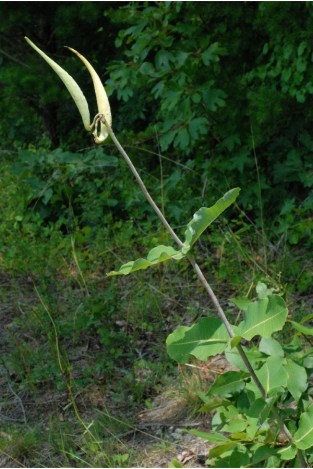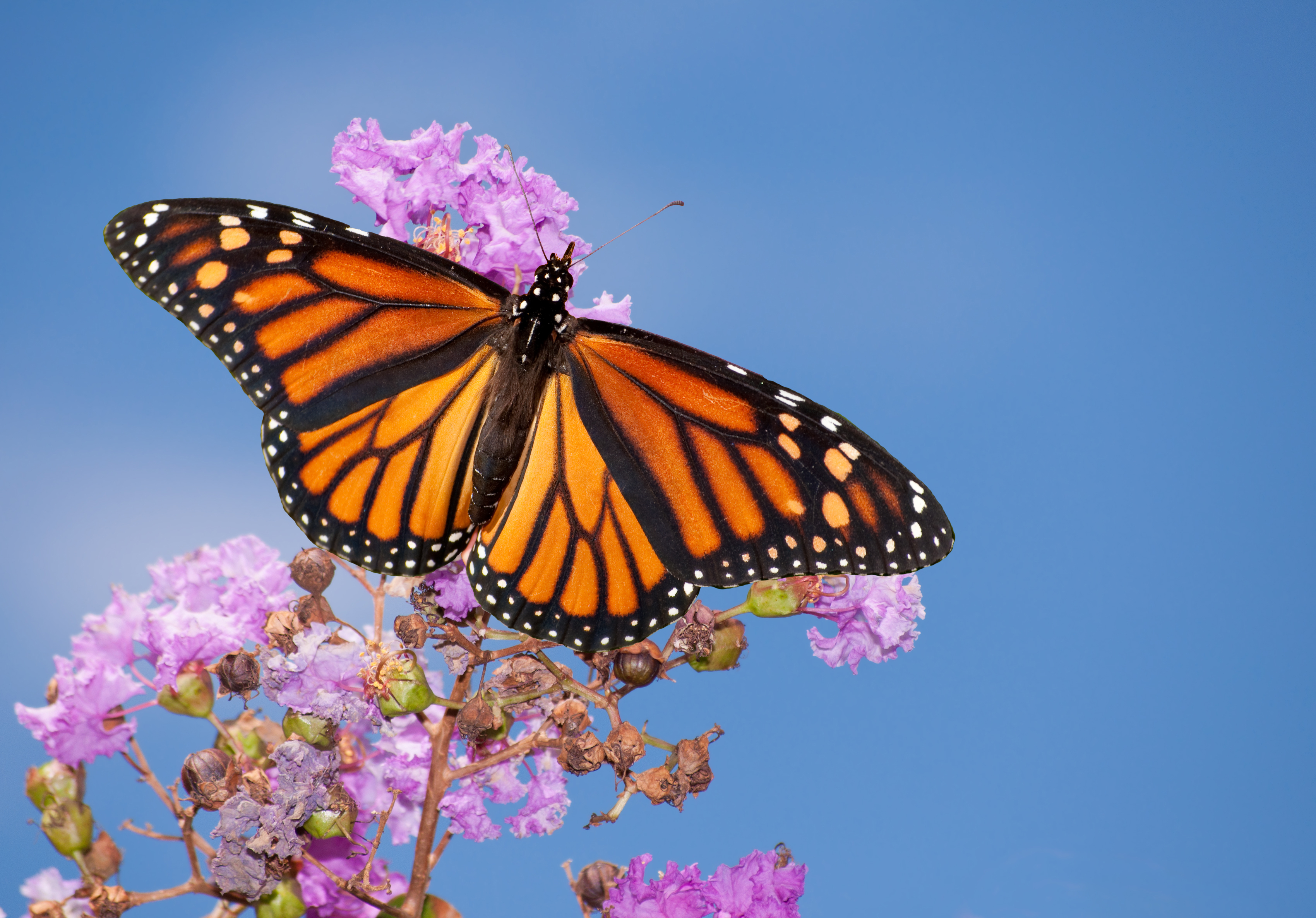The monarch butterfly is a prime example of charismatic minifauna. Charismatic megafauna — bears, sharks, wolves — evoke feelings of awe, but there’s a subtle contradiction in sheltering species that sometime eat us. With charismatic minifauna, however, that contradiction disappears. It may be harder to empathize with insects, but nurturing them comes a bit more naturally.
People like Debbie Jackson, a conservation specialist with Monarch Watch, have been nurturing the insects for decades.
“I started this as a little girl the cornfields of the Midwest, just enjoying them,” she said. “Feeding the caterpillars on milkweed and watching them grow.”
Now monarchs are in trouble — in part because there’s not much milkweed left in the cornfields of the Midwest.
“The numbers are astronomically horrible,” Jackson said. The monarch overwintering spot in the mountains of Mexico once hosted a billion butterflies. But just 3 million have shown up so far this year, she said.
Experts have known for years that monarchs are declining (and we’ve written about this before). But now the numbers are so low that the species is in danger of collapse.
There are several suspects in this decline. Logging in the Mexican overwintering zone hurts the butterflies. Broad-spectrum insecticides in both agriculture and gardens kill many every year. Climate change is almost certainly taking a toll, because insect’s lifecycles are tuned to the changing of the seasons. As the seasons slip, that timing gets disrupted. Spring came late this year in much of the North American butterfly habitat, and surveys found fewer of almost every kind of butterfly, not just monarchs.
What imperils monarchs the most is the disappearance of their breeding habitat. The caterpillars eat only one plant: Milkweed. And milkweed has been vanishing from the landscape.
Well, that’s not quite right: It hasn’t just been disappearing, we have been disappearing it. Milkweed is, after all, a weed. It causes problems on farms, retarding the growth of crops. By demanding the cheapest food possible we implicitly demand that farmers keep their fields weed free, kill milkweed, and — by extension — kill monarchs.
Plants genetically engineered for resistance to the herbicide glyphosate helped rid fields of milkweed. It’s a pretty tough, perennial plant, but it’s no match for glyphosate. Several studies have [PDF] linked herbicide tolerant crops to the decline of milkweeds.

Doug Goldman/USDA-NRCS PLANTS Databaseclasping milkweed, Asclepias amplexicaulis, is one species of milkweed that monarchs commonly eat
This is a bit perplexing, because what these studies indicate is… success! When I wrote about herbicides and herbicide-tolerant crops the debate was entirely over the methods that would lead to the best long-term weed control. The idea that you’d want to preserve weeds didn’t enter into it.
From the perspective of a farmer, a 90 percent reduction is milkweed is a victory. From the perspective of a monarch butterfly, however, it’s a defeat. This raises a philosophical question about what we want our farms to produce: Should they create calories as efficiently as possible, or do we want farms that also produce butterflies?
There’s a good argument for keeping things separate — if we maximize food production on farms, that leaves more space for dedicated wildlife habitat. But as humanity and its desires expand, we tend to grab back the land we set aside. I suspect we can do better if we are creative enough, by optimizing farmland for multiple uses.
And we don’t need to sit around wringing our hands over the plight of the monarch. There’s thousands of acres of monoculture that we have the power to diversify with no loss of agricultural productivity. Anyone with a lawn can plant milkweed and the dozens of other plants our charismatic minifauna rely upon.
P.S.: One effort to document the number of monarchs relies on citizen scientists. You can sign up to help out with that here.



